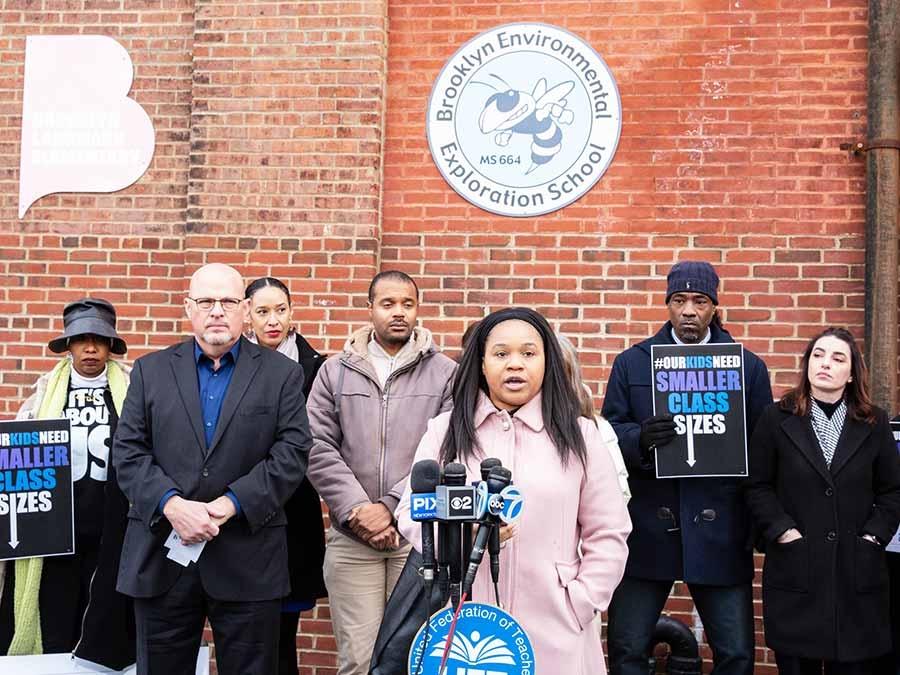
Brooklyn Landmark Elementary School teacher Beruryah Batyehudah, who is also a parent, speaks at the Nov. 21 press conference.
The UFT and other education advocates are applying pressure on the Adams administration to have a viable plan for implementing the state’s class-size reduction law.
The mayor’s midyear budget cuts and his comments about how he doesn’t believe the city will be able to meet the new requirements have cast doubt that his administration even intends to comply with the state law. The law requires that classes have a maximum of 20 students in kindergarten through 3rd grade, 23 for grades 4–8 and 25 for high school by September 2028.
While the number of classrooms in compliance with the new class sizes met the law’s first-year requirement of 20% of all classes, a lower percentage of New York City classrooms are under the new caps this year than in the previous two years.
“The class size law for New York City is something that we all must make sure is going to be implemented and implemented in the right way,” UFT President Michael Mulgrew said during a news conference on Nov. 21 outside the Brooklyn Landmark Elementary School in Ocean Hill-Brownsville.
Rebutting critics who claim the law will not help the city’s neediest students, a recent UFT survey found that more than 322,000 students in Title I schools across every borough are in oversized classes. In nearly 700 Title I schools, 50% or more classes are larger than what the law allows, the survey showed.
The Class Size Working Group of educators, parents, education advocates and others, which Chancellor David C. Banks convened in March, submitted a report on Dec. 11 with more than 50 recommendations for the Department of Education. One is to support schools that have already met the class-size benchmarks (partially or fully) with the necessary resources, including financial, to maintain them so “that there is not a revolving door of schools in compliance,” the report states. Another is that the DOE and the School Construction Authority should recognize there is a need for more school space, develop a plan to repurpose and maximize existing space, and implement better strategies to identify sites for new schools.
The report was initially scheduled to be released in October but was delayed until December due to internal debates within the group and the DOE.
Mulgrew said the city and the DOE have no excuse not to fully implement the law. The state Legislature increased funding for New York City public schools to a record $1.6 billion expressly to help pay for the landmark initiative. Built into the state law are requirements that the city work with the UFT and the Council of School Supervisors and Administrators, the union that represents principals, to implement it.
Smaller classes allow teachers to provide more one-on-one attention to students and create more opportunities for differentiation of instruction, Landmark chapter leader and 3rd-grade teacher Andrea Castellano said.
“I’m asking the mayor and the City Council to give New York City’s public schools the support we need to keep class sizes small — so those of us working in these schools can ensure that each child’s needs are truly being met, every day,” she said.
Landmark parent Beruryah Batyehudah, who is also an educator at the school, said her daughter’s 1st-grade classroom has 29 children, and the only alternative is a class of 31 students.
“This is not a representation of equity, equality or justice,” she said.